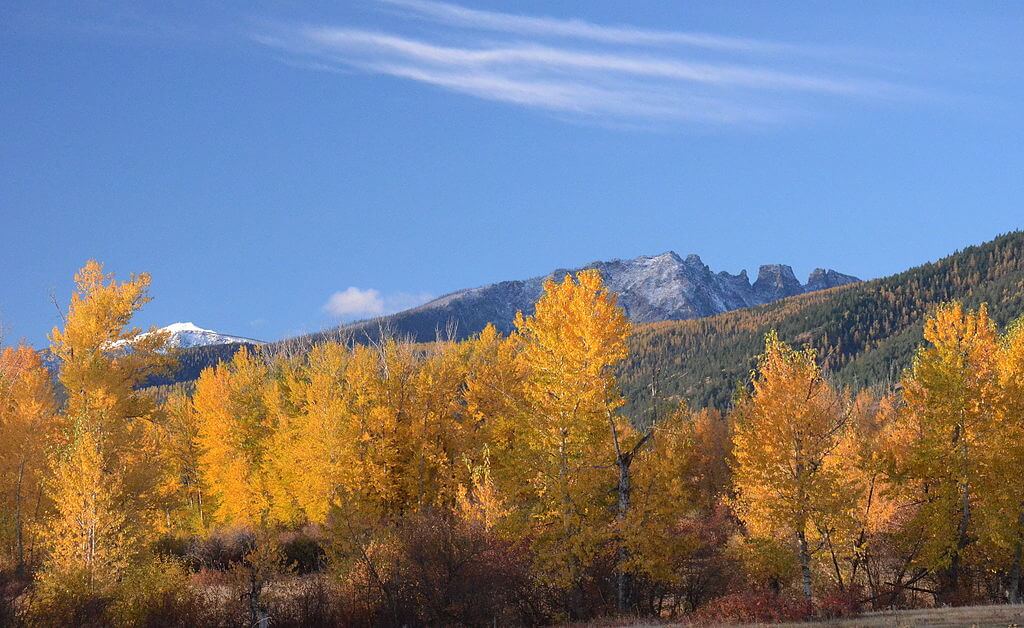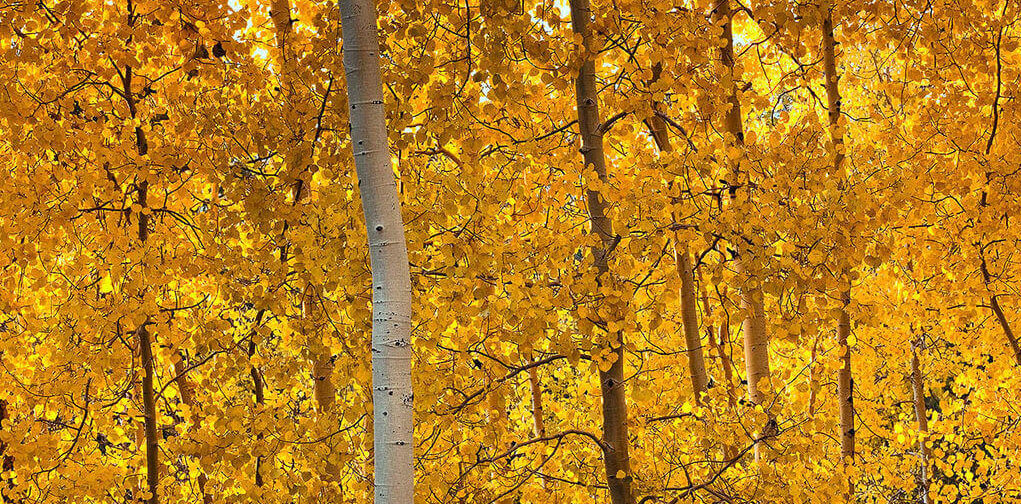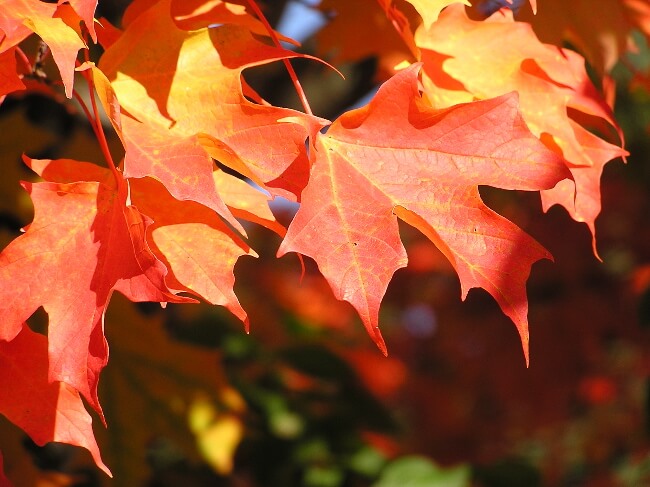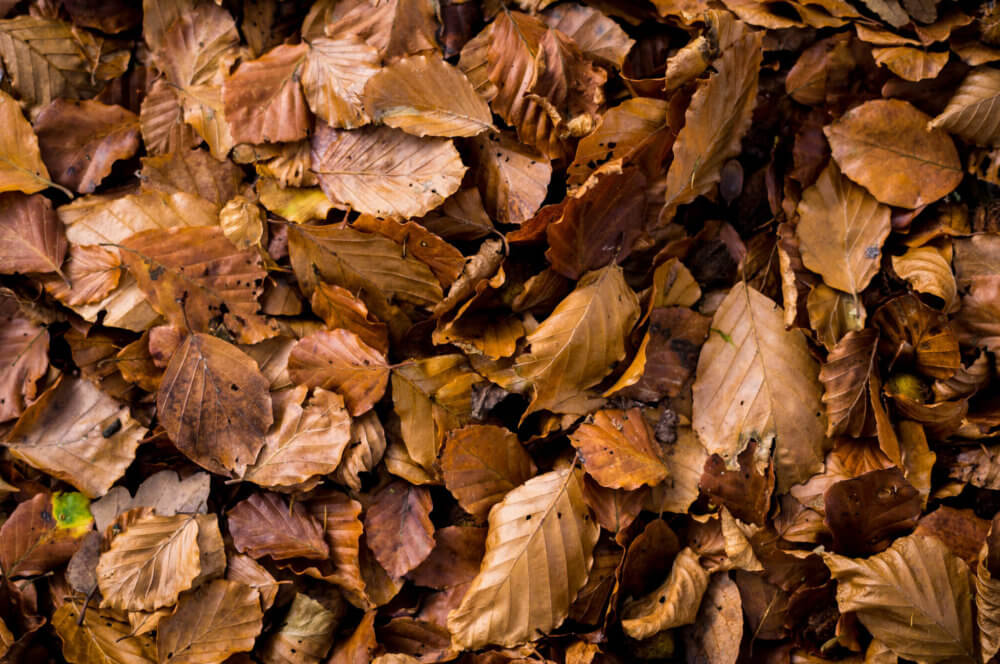by Drew Lefebvre
This fall, as I observed the bright colors on a range of deciduous trees, I couldn’t help but wonder: what factors determine the specific color that each tree turns in the fall? As with most topics in the natural world, the answer turns out to be: it’s complicated. But there are a few chemicals that play large roles in the process. Here’s a rundown of four main pigments that influence the beautiful foliage we’re treated to every autumn.

U.S. Forest Service photo by Roger Peterson (CC 2.0).
Even if it’s been a while since your last biology class, you likely remember that leaves are green because of chlorophyll. This green pigment allows the plant to absorb energy from the sun through the process of photosynthesis. What you might not already know is that leaves contain other types of pigments, too, such as carotenoids. These yellow pigments are responsible for colors in things like egg yolks, bananas, carrots, corn, and sweet potatoes.
But carotenoids don’t just help the plant look pretty—they also play important roles in the process of photosynthesis. Carotenoids help absorb light energy, then transmit it to chlorophyll. They also help out in environments where there is too much light energy for the plant to use. It turns out that carotenoids are really good at vibrating, allowing the plant to harmlessly dissipate this excess energy as heat.
Chlorophyll and carotenoids are always present within the leaf. Chlorophyll, which breaks down in the presence of sunlight, is constantly being regenerated by the plant, and generally masks the other pigments. However, as fall approaches and the nights become longer, the cells between the leaf and the stem begin to divide rapidly, creating an abscission layer which blocks the transport of materials into and out of the leaf. As a result, the leaves can no longer generate new chlorophyll, and the green hues begin to fade. In their place, the carotenoids begin to stand out, resulting in the yellow and gold shades we see in many of our western Montana trees such as cottonwood, aspen, and willow.

Photo by Doug Dolde (public domain).
There’s more to the story, however. When we see deeper oranges, reds, scarlets, and maroons, we’re looking at another type of pigment entirely: anthocyanins. Anthocyanins are responsible for the colors we see in foods like berries, red cabbage, grapes, and eggplant. And unlike chlorophyll and carotenoids, anthocyanins are not present year-round. In fact, they are newly synthesized each fall. After the abscission layer has formed, and transport out of the leaf has been blocked, there are still some sugars trapped in the leaf. The plant uses these sugars as raw materials for the manufacture of anthocyanins. The result? We see deep reds and purples as the anthocyanins become visible, as well as brilliant oranges when anthocyanins mingle with existing carotenoids. Maples and dogwoods are classic examples of trees with high anthocyanin content.

Photo by Liz West (CC 2.0).
Not all trees manufacture anthocyanins, and they need the right conditions to do so. Sunny fall days and dry weather result in extra-sugary sap, which in turn produces more anthocyanins. That’s why autumn in certain years presents more colorful foliage than in others. And the jury is still out as to the role that anthocyanins play in plant biology. Do they act as pest deterrents, encouraging herbivorous insects to seek a new place to lay their eggs? Or possibly they are a form of sunscreen, preventing leaves from damage at a vulnerable time when they’ve lost most of their chlorophyll.
Despite some unanswered questions, once thing is clear: with enough exposure to sunlight—or once the first hard freeze hits—the bright colors fade away. We’re left with one last pigment to get us through the winter: tannins. Responsible for the brown color in oak leaves, nuts, tea, and coffee, bitter tannins deter foraging animals and insects, as well as help the plant resist decay. And as the last color to reveal itself in late fall, tannins provide us with a sign that the season of transformation is over. Deciduous trees are safely tucked away in dormancy until the shorter nights of spring signal them to begin the process anew.

Photo by Neil Williamson (CC 2.0).












